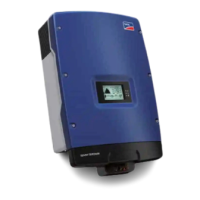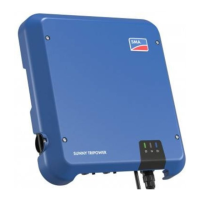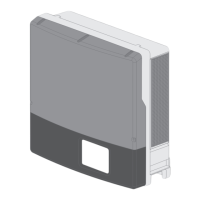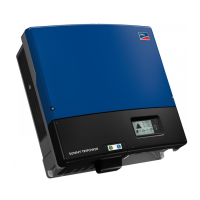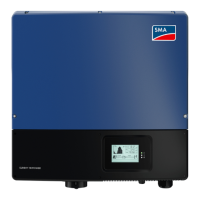SMA Solar Technology AG Product Description
3.6 SunSpec Data Types and NaN Values
The following table shows the data types used in the STP60 SunSpec Modbus profile and the
possible NaN values. The SunSpec data types are listed in the Type column of the assignment
tables. They describe the data width and the format of the data value saved at a register address.
The format, such as bit field, describes how SunSpec data is to be interpreted. The formats are
important, for example, for the displaying of data or for its further processing:
Accumulated value (32 bit). Is used for all sequentially increas-
Accumulated value (64 bit). Is used for all sequentially increas-
ing values. Only positive values are permitted. The overflow of
the number range takes place at 0x7FFF FFFF FFFF FFFF.
Bit field (16 bit). A combination of individual bits. Is used for
multi-value alarm messages or status. Value range 0 to 0x7FFF.
If the MSB is set in a bit field, all other bits are ignored.
Bit field (32 bit). A combination of individual bits. Is used for
multi-value alarm messages or status. Value range 0 to 0x7FFF
FFFF. If the MSB is set in a bit field, all other bits are ignored.
Number code (16 bit). The breakdown of the possible codes
can be found directly under the designation of the Modbus
register in the SunSpec Modbus profile assignment tables.
String (multiple of 2 bytes). A zero-terminating value or a value
of fixed length.
SunSpec scale factor as signed integer (16 bit). Scale factors
are used as exponents of a power of ten. Negative scale fac-
tors push the decimal point to the left, positive scale factors to
the right.
Unsigned integer (16 bit).
Unsigned integer (32 bit).
Unsigned integer (64 bit).
Technical Information STP60-SunSpec_Modbus-TI-en-12 13

